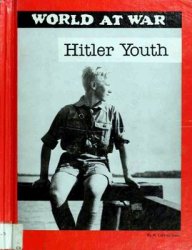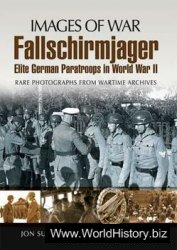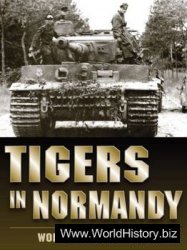The negotiations in London obscured in the minds of the Canadian Cabinet some equally important problems at Red River. It was easy to assume in Ottawa that you just took the North-West over and administered it, with a modest lieutenant-governor in Council stepping in where the Hudson’s Bay Company left off. That is probably what would have happened had it not been for Louis Riel, twenty-five years old, one-eighth Indian and seven-eighths French Canadian. Clever, ambitious, poetic, visionary, vain. Riel had been brought up in Red River and then educated in Montreal at the suggestion of the Archbishop of St-Boniface, Alexandre-Antonin Tache, who thought the boy had great potential for the priesthood. Potential he had indeed, but his power was put to the service not of the church but of his own Metis people, a group which few English Protestants quite understood, and which they frequently underestimated. The Metis lived in the winter and spring on river-lot farms along the Red and its tributaries, on deep, narrow lots in the French-Canadian style. In the summer and autumn they hunted buffalo. Like all hunting people they had evolved specific techniques. They were, in effect, a disciplined light cavalry. W. L. Morton, the great prairie historian who grew up in Manitoba, has this description of the Metis summer hunt:
Then the hunters, each mounted on his best horse, rode out under the captain and approached the herd up-wind behind any convenient fold in the rolling plain. When in position they charged in line at a signal from the captain. Every man carried his gun across the neck of his trained runner, and had a handful of powder loose in his pocket, his mouth full of balls. As the buffalo turned to run, each picked his animal, usually a young cow, and rode alongside. The gun was fired across the horse’s neck, aim being taken by the angle. Up to fifty or even a hundred yards, the Red River hunter could bring down his prey, though usually the shot was fired from close range. Then a palmful of powder was poured down
The barrel of the gun, a ball spat into the muzzle, and the whole shaken home by knocking the butt on the thigh or the saddle. The runner had meantime carried on at a gallop to
Overtake a new beast____And so it went in the thunder of the hooves, the snorting and
Roaring of the herd, in the dust and glare of the summer plains....
The Metis did not like the obtrusiveness of the Canadians from the East. The ones in Red River were noisy and aggressive, and the Canadian government in Ottawa had already sent surveyors to run a survey—one very different from the old Metis river-lot farms. Although the Canadian government fully intended that Metis land titles should be respected, there were no assurances from anyone in authority that such would be the case.
Riel knew his people and what he might manage with them. He and Metis horsemen seized Upper Fort Garry, the main hbc centre at the forks of the Red and the Assiniboine, on November 2,1869. They continued to hold it until they had forced the new Dominion of Canada to negotiate terms. The result was the minuscule Province of Manitoba, created in 1870, with special rights for the Metis and the French.
Riel can thus be regarded as the father of Manitoba, and in some ways he was. But he made mistakes—and he made one bad one. He knew his men, influenced and persuaded them; they admired him; but he was unfamiliar with power and its use. Taking Fort Garry by coup de main created great tension and uncertainty. The Metis were not the only mixed-blood group; there were English-speaking mixed-bloods as well, whom Riel wanted to carry with him. But the Metis were the best organized and most cohesive, and they had moved first. They were resented by others, not least by Canadians from Ontario who had come to regard Red River as their natural, if future, possession. There were threats uttered—often more empty than real, but how could Riel know? He was upset at what he believed, rightly, were conspiracies against him. By late February 1870, after negotiations with Canada had been started and a delegation to Ottawa was arranged for the spring, and as the turmoil in Red River was just beginning to settle, there seemed to be another threat from some Englishspeaking Ontarians living out in Portage la Prairie. Riel's men caught them, armed, as they were passing by Fort Garry (though they were on their way home, as it turned out), put them in prison in the fort, and as an example had one of the most belligerent and noisy of them shot after trial by Metis court martial. This was an ill-judged move. Whatever Thomas Scott may have been—a Protestant recently from Northern Ireland who made trouble wherever he went—one did not shoot people, not even by court martial. Riel never really recovered from the disasters that the shooting of Thomas Scott brought in its train. The Manitoba delegates to Ottawa had to go through Toronto incognito, so inflamed had Ontario opinion become. When they got to Ottawa they were arrested on warrants sworn out in Toronto and Ottawa, much to Sir lohn A. Macdonald’s embarrassment. They were freed, with Macdonald privately footing the bill for the lawyers, but the arrests were symptomatic of a bitter and hard Ontario-Protestant position that Macdonald had to take seriously.
In the end a postage-stamp-sized Manitoba, 225 kilometres (140 miles) wide and 175 kilometres (110 miles) deep, was brought into Confederation on July 15, 1870, pretty much on the terms originally negotiated with Riel. A military expedition was sent out west to show the flag, and it forced Riel into hiding; though this was not the official intent, the men of the Ontario militia would never have allowed Riel to escape had they found him. Riel was in time convicted of the murder of Scott. He was eventually given amnesty in 1875 by the Governor General, Lord Dufferin, on condition of five years’ banishment from Canada.
Beyond Red River, in what had now officially become Canada’s Northwest Territories, the great plains stretched westward into the arching distances, rising gradually to the vast swales of southern Alberta’s grassland at 750 metres (2,500 feet). There, finally, the Rockies shouldered their height out of the foothills and fenced the whole western horizon. The western “plains,” so-called, were inhabited by proud tribes, Assiniboine, Cree, Blackfoot, most of them with the horses that had spread north from Mexico and had reached the northern plains by the middle of the eighteenth century. The plains peoples hunted buffalo; they lived from, by, and because of, the buffalo. Already these tribes, especially the Blackfoot of southern Alberta, were being plied with rot-gut whisky by American traders operating out of Fort Benton, Montana. Canada would soon have to deal with that tragic problem.




 World History
World History









